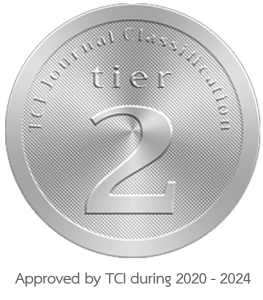Awareness of China English: Chinese vocational and technical college students’ views
DOI:
https://doi.org/10.62819/jel.2025.753Keywords:
China English, English as an international language (EIL), English language teaching (ELT), World EnglishesAbstract
The English language has become globally prevalent as an International Language (EIL), achieving legitimacy in outer-circle regions where localized varieties have developed and gaining significant status in expanding-circle areas like East Asia. In China, English has grown remarkably over the past thirty years. This study examined Chinese Business English major students' awareness of China English and their preferences for English varieties used in Chinese classrooms within the context of EIL. Data from semi-structured interviews were analyzed using qualitative content analysis (QCA). Findings revealed that students generally prefer British or American English due to their early exposure through formal education, but increased global interactions are fostering greater acceptance of China English as a legitimate variety. This study contributes to the World Englishes framework, offering theoretical and pedagogical insights into English learning and teaching in China. The findings highlight the need for a more inclusive approach that acknowledges both global and local English varieties, enhancing the pedagogical framework to better reflect the evolving global landscape of English.
References
Ambele, E.A. (2022). Thai English? Non-Thai English lecturers’ perceptions of Thai English and World Englishes. LEARN Journal: Language Education and Acquisition Research Network, 15(2), 724-750.
Ambele, E. A. (2023). Exploring Thai university students’ attitudes towards the accents of other English users. Issues in Educational Research, 33(4), 1271–1285.
Ambele, E. A., & Boonsuk, Y. (2021). Who “owns English” in our changing world? Exploring the perception of Thai university students in Thailand. Asian Englishes, 22(3), 297–308.
Chaengaksorn, N. (2021). Attitudes toward English varieties among Thai university students: A questionnaire study. Asian Englishes, 23(2), 145–160.
Chen, Y. (2022). PRETCO: An English test for vocational and technical college students. International Journal of TESOL Studies, 4(1), 213–227. https://doi.org/10.46451/ijts.2022.01.14
Dörnyei, Z. (2007). Research methods in applied linguistics. Oxford University Press.
Eaves, M. (2011). English. Chinglish, or China English? English Today, 27(4), 64–70. https://doi.org/10.1017/S0266078411000563
Fang, F. (2017). An Investigation of attitudes towards English accents: A case study of a university in China. In Z. Xu, D. He, D. Deterding (Eds.), Researching Chinese English: The state of the art (pp. 141–156). Springer International Publishing. https://doi.org/10.1007/978-3-319-53110-6_10
Fang, F., & Ren, W. (2018). Developing students’ awareness of Global Englishes. ELT Journal, 72(4), 384–394. https://doi.org/10.1093/elt/ccy012
Fang, X. (2011). Globalizing ELT: From Chinglish to China English. Journal of Language Teaching and Research, 2(2), 377–381.
Galloway, N., & Rose, H. (2018). Incorporating Global Englishes into the ELT classroom. ELT Journal, 72(1), 3–14. https://doi.org/10.1093/elt/ccx010
Gao, X. (2010). Language attitudes and preferences: The case of Chinese university students. Journal of Multilingual and Multicultural Development, 31(2), 131144.
He, D., & Li, D. C. (2009). Language attitudes and linguistic features in the China English debate 1. World Englishes, 28(1), 7089
Jenkins, J. (2015). Global Englishes: A resource book for students (3rd ed.). Routledge.
Kachru, B. B. (1982). The bilingual’s linguistic repertoire. In B. Hartford, A. Valdman, & C. R. Foster (Eds.), Issues in international bilingual education: The role of the vernacular (pp. 25–52). Springer. https://doi.org/10.1007/978-1-4684-4235-9_2
Kilickaya, F. (2009). World Englishers, English as an international language and applied linguistics. English Language Teaching, 2(3), 35–38. https://doi.org/10.5539/elt.v2n3p35
Kirkpatrick, A., & Zhichang, X. (2002). Chinese pragmatic norms and “China English”. World Englishes, 21(2), 269–279. https://doi.org/10.1111/1467-971X.00247
Li, D. C. S. (2023). Why China English should give way to Chinese English. EnDörnyeiglish Today, 154(3).
Liu, M., & Jackson, J. (2008). An exploration of Chinese EFL learners’ unwillingness to communicate and foreign language anxiety. The Modern Language Journal, 92(1), 71–86. https://doi.org/10.1111/j.1540-4781.2008.00687.x
Pan, H., Liu, C., Fang, F., & Elyas, T. (2021). ‘How Is My English?’: Chinese university students’ attitudes toward China English and their identity construction. Sage Open, 11(3). https://doi.org/10.1177/21582440211038271
Pan, Z. (2019). Struggling between national pride and personal empowerment: The language ideologies held by Chinese university students towards China English. Lingua, 227, 102702. https://doi.org/10.1016/j.lingua.2019.06.003
Romaine, S. (2007). 22. Linguistic diversity and language standardization. In M. Hellinger & A. Pauwels (Eds.), Handbook of language and communication: Diversity and change (pp. 685–714). De Gruyter. https://doi.org/10.1515/9783110198539.4.685
Seidlhofer, B. (2011). Conceptualizing “English” for a multilingual Europe. In A. De Houwer, A. Wilton (Eds.), English in Europe today: Sociocultural and educational perspectives (pp. 133–146). John Benjamins Publishing Company. https://doi.org/10.1075/aals.8.09sei
Wang, W. (2015). Teaching English as an international language in China: Investigating university teachers’ and students’ attitudes towards China English. System, 53, 60–72.
Weerachairattana, R., Duan, J., & Buripakdi, A. (2019). World Englishes in expanding circle: Views from university students in Thailand and China. Journal of Studies in the English Language, 14(1), 125–181.
Wei, R., & Su, J. (2012). The statistics of English in China: An analysis of the best available data from government sources. English Today, 28(3), 10–14.
Wei, R., & Su, J. (2015). Surveying the English language across China. World Englishes, 34(2), 175–189. https://doi.org/10.1111/weng.12132
Xu, W., Wang, Y., & Case, R. E. (2010). Chinese awareness towards varieties of English: A pre-Olympic examination. Language Awareness, 19(4), 249–260. https://doi.org/10.1080/09658416.2010.508528
Yang, C., & Zhang, L. J. (2015). China English in trouble: Evidence from dyadic teacher talk. System, 51, 39–50.
Yang, J. (2005). Lexical innovations in China English. World Englishes, 24(4), 425–436. https://doi.org/10.1111/j.0883-2919.2005.00424.x
Zhang, F. (2009). China English: Adaptation of English to Chinese culture. Asian Social Science, 5(4), 120–124.



















